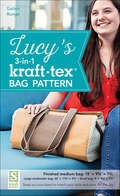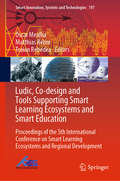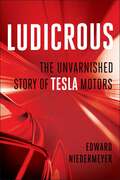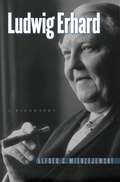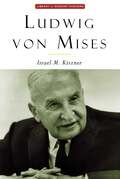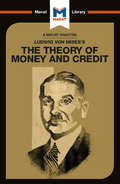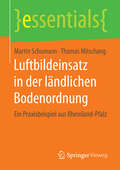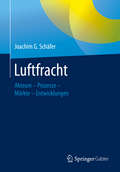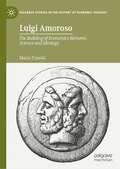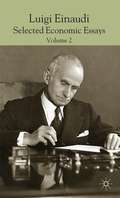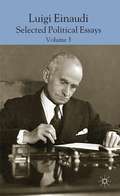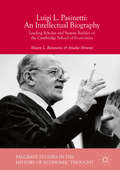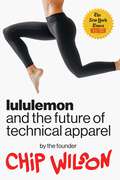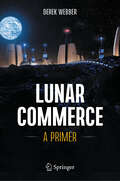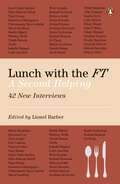- Table View
- List View
Lucy's 3-in-1 kraft-tex Bag Pattern
by Gailen Runge1 pattern, 3 sizes, unlimited possibilities This versatile and stylish bag comes in three sizes: small, medium, and large weekender—perfect for those overnight trips (fits carry-on luggage requirements)! Play with 2 different colors of kraft-tex and customize the interchangeable band with outside zipper pockets, inside passport pockets, and even knitting needle holders! Or add elastic straps and use the band by itself to carry your yoga mat or picnic blanket. The clever zipper treatment allows each of the three bags to open wide, making finding your necessities a breeze. Includes advice and tips on sewing and handling kraft-tex. • Mix and match your bands to customize your look and use (small and medium bags use the same size band!) • Experiment with kraft-tex, a popular new substrate that all accessory sewists are talking about! • Carry heavy loads without tearing—unique band construction is both lightweight and sturdy • Finished medium bag 15" x 9 1/2" x 7 3/4"; large weekender bag 22" x 11 3/4" x 9 1/2"; small bag 9" x 9 1/2" x 7 3/4"
Ludic, Co-design and Tools Supporting Smart Learning Ecosystems and Smart Education: Proceedings of the 5th International Conference on Smart Learning Ecosystems and Regional Development (Smart Innovation, Systems and Technologies #197)
by Óscar Mealha Matthias Rehm Traian RebedeaThis book presents papers from the 5th International Conference on Smart Learning Ecosystems and Regional Development, which promotes discussions on R&D work, policies, case studies, entrepreneur experiences, with a particular focus on understanding the relevance of smart learning ecosystems for regional development and social innovation, and how the effectiveness of the relation of citizens and smart ecosystems can be boosted. The book explores how technology-mediated instruments can foster citizens’ engagement with learning ecosystems and territories, providing insights into innovative human-centric design and development models/techniques, education/training practices, informal social learning, innovative citizen-driven policies, and technology-mediated experiences and their impact. As such, it will inspire the social innovation sectors and ICT, as well as economic development and deployment strategies and new policies for smarter proactive citizens.
Ludicrous: The Unvarnished Story of Tesla Motors
by Edward NiedermeyerTesla is the most exciting car company in a generation . . . but can it live up to the hype? Tesla Motors and CEO Elon Musk have become household names, shaking up the staid auto industry by creating a set of innovative electric vehicles that have wowed the marketplace and defied conventional wisdom. The company's market valuation now rivals that of long-established automakers, and, to many industry observers, Tesla is defining the future of the industry. But behind the hype, Tesla has some serious deficiencies that raise questions about its sky-high valuation, and even its ultimate survival. Tesla's commitment to innovation has led it to reject the careful, zero-defects approach of other car manufacturers, even as it struggles to mass-produce cars reliably, and with minimal defects. While most car manufacturers struggle with the razor-thin margins of mid-priced sedans, Tesla's strategy requires that the Model 3 finally bring it to profitability, even as the high-priced Roadster and Model S both lost money. And Tesla's approach of continually focusing on the future, even as commitments and deadlines are repeatedly missed, may ultimately test the patience of all but its most devoted fans. In Ludicrous, journalist and auto industry analyst Edward Niedermeyer lays bare the disconnect between the popular perception of Tesla and the day-to-day realities of the company—and the cars it produces. Blending original reporting and never-before-published insider accounts with savvy industry analysis, Niedermeyer tells the story of Tesla as it's never been told before—with clear eyes, objectivity and insight.
Ludwig Erhard
by Alfred C. MierzejewskiIn the first English-language biography of one of the most important figures in postwar German history, Alfred C. Mierzejewski examines the life and service of Ludwig Erhard (1897-1977), West Germany's first minister of economics and second chancellor. Erhard liberalized the German economy in 1948 and is generally considered the father of West Germany's "economic miracle--the period of extraordinary growth in jobs and improvement in the standard of living in the 1950s that helped stabilize Germany's first successful democracy. While recent scholarship has dismissed Erhard's influence on Germany's economic recovery, Mierzejewski returns to little-cited German analyses and Erhard's own record and concludes that Allied currency reform and Erhard's liberalization of the economy were crucial triggers for Germany's unprecedented economic boom. Mierzejewski provides insight into Erhard's policies, his ideas, his character, and his relationships with Konrad Adenauer and Charles de Gaulle. By offering a fresh account of Erhard's career as a leader in postwar West Germany, Mierzejewski provides a deeper understanding of Germany's economy as well as its democracy.
Ludwig Von Mises: The Man & His Economics (The\collected Works Of Israel M. Kirzner Ser.)
by Israel KirznerIsrael Kirzner, a former student of Ludwig von Mises, looks at the influences of the economic debates in Europe on von Mises' thought, traces his theories as they developed in his writings, and discusses both critical and supportive commentators on von Mises.
Ludwig von Mises's The Theory of Money and Credit (The Macat Library)
by Padraig BeltonLudwig Von Mises’s 1912 contribution to the theory of monetary policy and the current prevailing consensus in modern economic liberalism, The Theory of Money and Credit, was a milestone achievement. The author’s familiarity with the historical literature on banking and credit allows him to present a coherent theoretical structure that links private exchange between individuals, business and banks to condition the markets affecting money and credit. Through its wider influence on liberal thinkers and politicians, the Theory of Money and Credit has become a classic reference for those seeking to understand the advance of economic liberalism since the 20th century.
Lufa Farms
by Annelena Lobb Jose B. Alvarez Robert MackalskiIn 2013, Mohamed Hage, founder of the rooftop farming business called Lufa Farms, thought his company had reached a level of maturity where scaling the business model was the next logical step. With two greenhouses already in Canada, he was looking into other locations in the U.S. Though Lufa Farms' advanced cultivation technologies made the company stand out in its sector, the industry was still young and investors were not fully comfortable putting their resources into rooftop farms. This case explores the intricacies of a rooftop farming business, how it built a successful brand, and presents the challenges that might lie ahead for the company as the founder thinks about expansion.
Lufax: FinTech and the Transformation of Wealth Management in China
by Lauren H. Cohen Christopher Malloy Anthony K. WooThis case examines the rise and competitive positioning of Lufax, an online marketplace headquartered in Shanghai, China, and a pioneer in the origination and trading of financial assets. The company had grown at a remarkable rate, and was awarded “Trading Platform of the Year” for 2017 by the Asian Banker Financial Markets Awards Programme. Case protagonist Gregory Gibb, Chairman & CEO of Lufax, must decide how to navigate the challenging regulatory and competitive landscape, in order to achieve Lufax’s goal of transforming and expanding the wealth management industry in China. Whether the technology giants (e.g. Baidu, Alibaba, and Tencent, often collectively known as “BAT”) would be able to develop strong capabilities in the “Fin” part of “FinTech,” and whether traditional financial institutions would become technologically sophisticated enough for their “Tech” capabilities to materialize, were among some of the key uncertainties and potential challenges that Lufax had to confront. There were also looming risks and lingering uncertainties on the political and regulatory front. The focal point of the case centers around how Gibb can strategize and position Lufax going forward, and leverage its unique “finance DNA” to try to win market share in the rapidly changing FinTech and wealth management sectors in mainland China.
Luftbildeinsatz in der ländlichen Bodenordnung: Ein Praxisbeispiel aus Rheinland-Pfalz (essentials)
by Martin Schumann Thomas MitschangIn diesem essential beschreiben Martin Schumann und Thomas Mitschang die Verwendung von Luftbildern in der Flurbereinigungsverwaltung Rheinland-Pfalz. Anhand eines Beispiels stellen die Autoren die Bedeutung der Luftbilder für die Planung von Landentwicklungsmaßnahmen dar. Seit den fünfziger Jahren des letzten Jahrhunderts werden Luftbilder für die unterschiedlichen Zwecke eingesetzt. Dabei haben sich die Qualität der Aufnahmen sowie die Auswertungsmöglichkeiten im Laufe der Jahrzehnte verändert.
Luftfracht: Akteure – Prozesse – Märkte - Entwicklungen
by Joachim G. SchäferDieses Buch beschreibt anhand zahlreicher Beispiele die gegenwärtigen Chancen und Risiken der Luftfracht vor dem Hintergrund stagnierender Transportmengen seit der Finanzkrise im Jahr 2008. Es zeigt, welche Auswirkungen diese Entwicklungen auf die Beteiligten haben, insbesondere auf Versender, Fluggesellschaften, Flughäfen und Spediteure. Die anwendungsorientierte Darstellung ermöglicht zudem einen Einblick in die Gestaltung komplexer Lieferketten und die Spannungsfelder, in denen sich die Akteure der Luftfracht bewegen.
Luigi Amoroso: The Building of Economics Between Science and Ideology (Palgrave Studies in the History of Economic Thought)
by Mario PominiThis book outlines the rich and complex path of Luigi Amoroso, the main exponent of the Paretian School in Italy and probably the most important Italian mathematical economist during the interwar period. The author presents, in a systematic form, the evolution of Amoros's thinking and his main achievements. Despite his relevance, many aspects of Amoroso's thought are little known or misunderstood. This volume delves further to explore the Paretian tradition in which Amoroso enlisted, the conservative anti-democratic ideology that prompted his adhesion to fascism, his contribution to defining the main features of economic theory as formal science, and his various contributions to specific fields such as microeconomic theory, equilibrium dynamics, business cycles and non-competitive markets. It will be relevant to students and researchers interested in the history of economic thought.
Luigi Einaudi: Selected Economic Essays, Volume 2
by Riccardo Faucci Roberto Marchionatti Fondazione Luigi Einaudi TorinoLuigi Einaudi (1874-1961) was a leading liberal Italian economist, economic historian and political figure: Governor of the Bank of Italy, Minister for the Budget and President of the Italian Republic. He was a prolific writer in all fields and his writings testify to his outstanding contribution to economics during his long career.
Luigi Einaudi: Selected Political Essays, Volume 3
by Domenico Da Empoli Corrado Malandrino Valerio Zanone Fondazione Luigi Einaudi RomaLuigi Einaudi (1874-1961) was a leading liberal Italian economist, economic historian and political figure: Governor of the Bank of Italy, Minister for the Budget and President of the Italian Republic. He was a prolific writer in all fields and his writings testify to his outstanding contribution to economics during his long career.
Luigi L. Pasinetti: Leading Scholar And System Builder Of The Cambridge School Of Economics (Palgrave Studies In The History Of Economic Thought)
by Mauro L. Baranzini Amalia MiranteLuigi L. Pasinetti (born 1930) is arguably the most influential of the second generation of the Cambridge Keynesian School of Economics, both because of his achievements and his early involvement with the direct pupils of John Maynard Keynes. This comprehensive intellectual biography traces his research from his early groundbreaking contribution in the field of structural economic dynamics to the ‘Pasinetti Theorem’. With scientific outputs spanning more than six decades (1955–2017), Baranzini and Mirante analyse the impact of his research work and roles at Cambridge, the Catholic University of Milan and at the new University of Lugano. Pasinetti’s whole scientific life has been driven by the desire to provide new frameworks to explain the mechanisms of modern economic systems, and this book assesses how far this has been achieved.
Luke Fuszard
by Leslie A. Perlow Matthew PrebleLuke Fuszard (MBA 2010) shares the personal details of his life leading up to the moment when he was unexpectedly fired from his job in early 2021.
Lukens Inc.: The Melters' Committee (A)
by Jay W. Lorsch Alison H. WatsonDiscusses the Lukens board's involvement in strategic planning.
Lululemon and the Future of Technical Apparel
by Chip WilsonThe unauthorized story of Lululemon.This is a book about ordinary people who took an opportunity to be creative, to be innovative, and to maximize their potential. Chip Wilson&’s part in this story comes from the learning of thousands of mistakes. He set the culture, business model, quality platform, and people development program and then got out of the way. Lululemon&’s exponential growth, culture, and brand strength have few peers, and it is because of those employees who choose to be great. This book is also about missed opportunity - five years of missed opportunity. Chip was playing to win while the directors of the company he founded were playing not to lose.
Lumen and Absorb Teams at Crutchfield Chemical Engineering
by Teresa M. Amabile Elizabeth A. SchatzelLarge discrepancies have developed between two elite technology development teams at Crutchfield Chemical Engineering in terms of motivation and creativity. To investigate, Paul Burke, director of corporate technology development, commissioned a study of the day-by-day dynamics within these teams (the Lumen and Absorb teams). Using 10 days' worth of electronic daily diaries collected from all members of the two teams, the study reveals rich information about team leader behaviors, team member thoughts and behaviors, team dynamics, and project progress. By summarizing both the diary data and personality data on both teams' members, the study presents Burke with a clear dilemma about enhancing and maintaining motivation and creativity in teams of high-level professionals working on challenging projects under difficult organizational conditions.
Luminopia: Improving Treatment for Visual Disorders
by Doug J. Chung Sarah MehtaLuminopia-a start-up founded in January 2016 by three Harvard College freshmen-uses virtual reality technology to treat amblyopia (more commonly called "lazy eye"), the single biggest cause of visual disorders among children. By February 2017, the three founders had raised $950,000 in angel funding and developed a prototype of their virtual reality product, which was in use in clinical trials at Boston Children's Hospital. As the founders prepare to bring their new medical device to market, they struggle with two key decisions: Should Luminopia create its own salesforce to sell its product or should it outsource? And how should the company price its device to maximize returns yet remain attractive to doctors, insurance providers, and individual patients?
Luna Pen (A)
by Kathleen L. Mcginn Michael A. WheelerDiscusses the negotiation of a possible trademark infringement involving a German conglomerate and a Taiwanese trading firm.
Luna Pen (B)
by Kathleen L. Mcginn Michael A. WheelerPresents a series of multiple choice options to be distributed and discussed in class.
Lunar Commerce: A Primer
by Derek WebberThis book explores the advent of lunar commerce including the potential scale and timing of the initiative, the associated revenue potential and the potential risks and uncertainties. Specifically, it discusses the reason for the increased interest in lunar commerce, which lunar markets will be part of the initiative and how much of it will be commercial or dependent on government funding. It provides an easy introduction to the content of the Lunar Commerce Portfolio, which was recently issued, under the author's leadership, by the Working Group on Lunar Commerce and Economics of the Moon Village Association, which has Observer Status at the United Nations in Vienna.
Lunch with the FT: A Second Helping
by Lionel BarberLunch with the FT has been a permanent fixture in the Financial Times for almost 30 years, featuring presidents, film stars, musical icons and business leaders from around the world.The column is now a well-established institution, which has reinvigorated the art of conversation in the convivial, intimate environment of a long and boozy lunch.This new and updated edition includes lunches with:Elon MuskDonald TrumpHilary MantelRichard BransonZadie SmithNigel FarageRussell BrandDavid GuettaYanis VaroufakisJean-Claude JunckerGwyneth PaltrowRebecca SolnitJordan PetersonChimamanda Ngozi AdichieAnd more...
